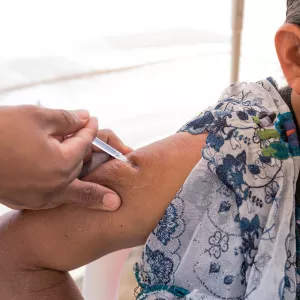Rural populations face heightened COVID-19 risks
BY JAWOO KOO, CLAUDIA RINGLER, ANIRUDDHA GHOSH AND CARLO AZZARRI India’s devastating second wave of COVID-19 is adding unprecedented numbers of new cases every day, and it seems to be spreading more to rural areas. This trend poses serious challenges for efforts to contain the disease, as rural areas may have heightened pandemic vulnerabilities. It is hard to assess the urban-rural

Rural populations face heightened COVID-19 risks
BY JAWOO KOO, CLAUDIA RINGLER, ANIRUDDHA GHOSH AND CARLO AZZARRI
India’s devastating second wave of COVID-19 is adding unprecedented numbers of new cases every day, and it seems to be spreading more to rural areas. This trend poses serious challenges for efforts to contain the disease, as rural areas may have heightened pandemic vulnerabilities. It is hard to assess the urban-rural difference globally, as testing and reporting are more challenging in rural areas, but research findings from the United States show higher COVID-19 susceptibility and death rates in rural counties. This pattern aligns with our recent analysis that assessed the risk of COVID-19 in 12 low- and middle-income countries (LMICs).
To support COVID-19 relief efforts at the subnational level, including targeting of vaccination efforts, we constructed a subnational dataset of key COVID-19 risk indicators and potential risk hotspots for 12 LMICs across Africa, Asia, and Latin America, where tracking of COVID-19 data is only available at the national level. Based on patient data compiled and analyzed worldwide, the science community’s consensus now is that key COVID-19 risk factors include age, sex, and obesity. Being old, male, and obese increases both vulnerability to infection and likelihood of severe illness. Based on each indicator’s COVID-19 death hazard ratio, we computed a composite index for second-level subnational administrative units (i.e., county or district level) using exploratory factor analysis, a statistical technique that reduces the number of variables.
Photo Credit: Victor Sánchez/PAHO

